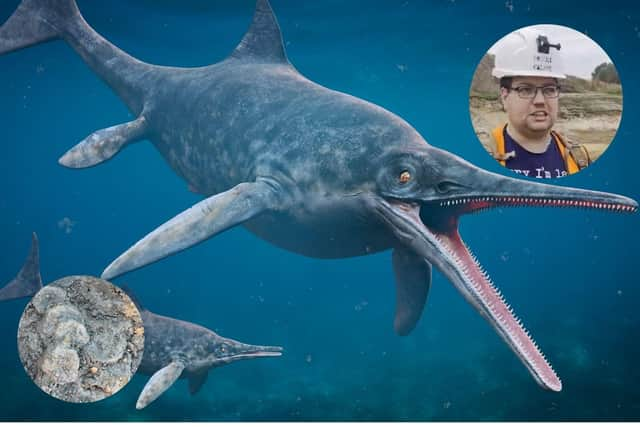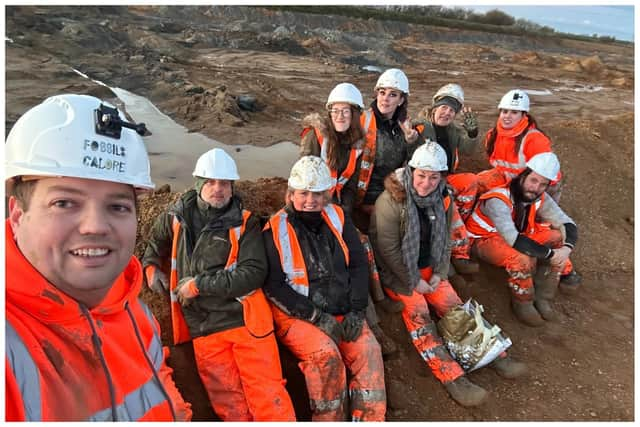Peterborough's Jurassic Park: 155 million year old sea monster found in quarry near city
and live on Freeview channel 276
A Peterborough paleontologist is making waves after uncovering a 155 million year old sea monster that used to rule the oceans where the Fens now lie.
Jamie Jordan uncovered a number of perfectly preserved vertebrae of the Opthalmosaur – a species of Ichthyosaur – last week, and will now search for the rest of the skeleton.
Advertisement
Hide AdAdvertisement
Hide AdThe exact location where the giant reptile has been found is being kept a closely guarded secret, but Jamie described it as being ‘close to Peterborough.’


While many people call Ichthyosaurs dinosaurs, they are in fact, not a dinosaur, but a giant sea reptile who ruled the waves in the Jurassic period – when the Stegosaurus, Diplodocus and Allosaurus walked the earth.
Jamie, who runs the Fossil’s Galore museum in March said: “We were doing a routine site visit, just to see if anything had turned up.
"When I got to where the bones were found, I looked in the spoil heaps there, and I came across three vertebrae just sitting there.
Advertisement
Hide AdAdvertisement
Hide Ad"In another pile, I saw two more, and then I turned round and saw a cluster of them.


"They are mostly in perfect condition – one has slight damage, which is what you can get when diggers are involved.
"I knew what it was when I saw it – vertebrae are very good diagnostic bones, and the clay protects them.”In total, Jamie found 20 vertebrae, along with the neural arch of the creature.
Jamie said: “We can tell it was quite a large creature, an adult.
Advertisement
Hide AdAdvertisement
Hide Ad"It would have been about 5 metres long, and lived in a deep ocean. It would have eaten fish, ammonites and other sea creatures.”
Jamie is now preparing to start work cleaning the bones, so he can properly examine the finds.
He said: “We might be able to see signs of marks from predators when we get a closer look.
"In the new year we will go back to the site and see if we can find the rest of the skeleton. It is possible it will be near the vertebrae, but it may also have been moved by other animals, or the current.”
Jamie is looking for funding to move to a large premises.
Advertisement
Hide AdAdvertisement
Hide AdHe said: “Our biggest crowd draw, and scientifically important discovery, is Indie the Iguanodon, a dinosaur skeleton we discovered back in 2017 in Surrey. We have been working on this skeleton since its discovery in one of the first fish bowl laboratories in Europe, but now we are in need of more space as it is estimate we still have another 5-8 years worth of work to expose all the bones as well as a back log of other important specimens in need preparation, all of which will be done in full view of the public.
"With a larger preparation laboratory we will also be able to train up more technicians to work on an ever expanding collection of specimens discovered in the felid.
“To achieve the vision of opening a National Centre of Prehistory we are raising funds to purchase a suitable venture and transform it into a World class facility.”
For more information on Fossil’s Galore, and their campaign for larger premises, visit https://www.fossilsgalore.com/project-unearthed/